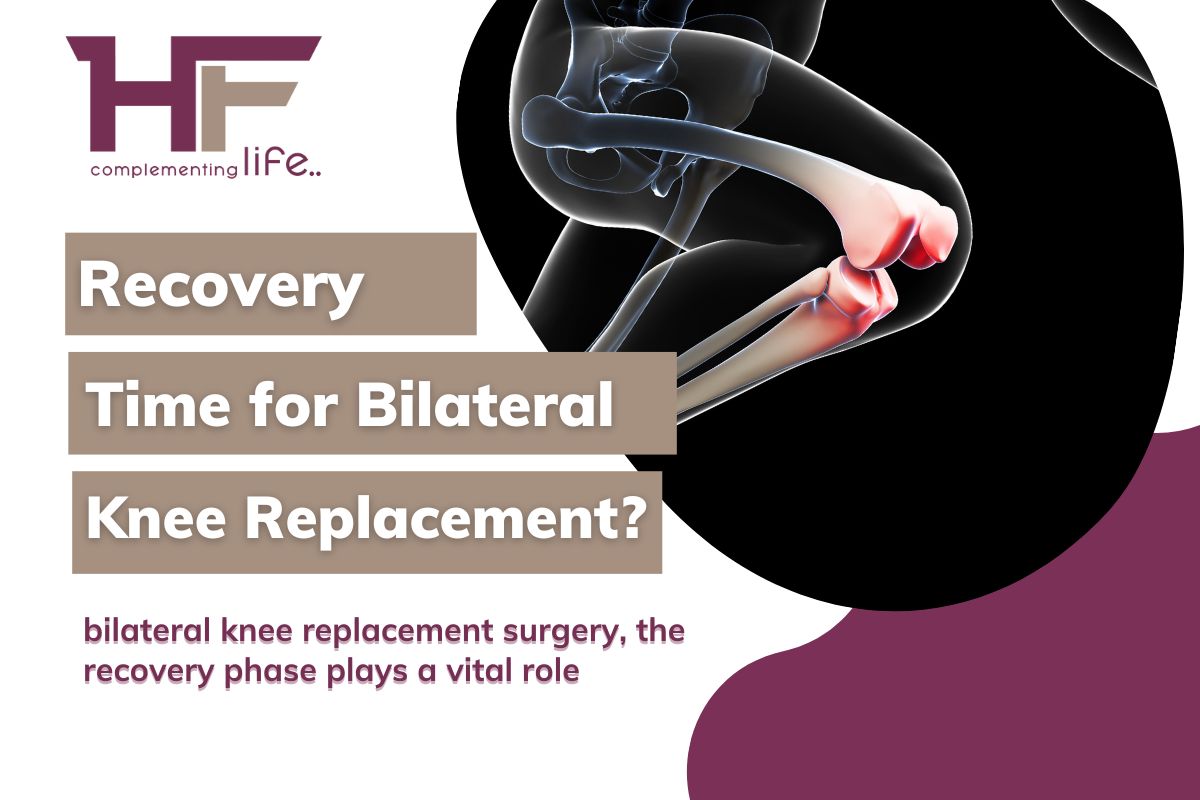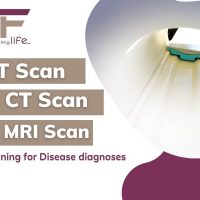After any surgery, you used to take to a recovery room for a few hours before being shifted to the hospital room. For bilateral knee replacement surgery, one should stay at the hospital for at least three to five days (staged bilateral knee replacement surgery). But, if you go through simultaneous double knee replacement surgery, the stay at the hospital can extend to 10 days.
During hospitalization, the patient used to be under the supervision of a doctor. Your doctor will watch you for any sign of pain, infection, or post-operational complications. At this time, your doctor will also prescribe you light exercise that can improve your movement, strengthen the muscle and promote healing of the knee.
So, with bilateral knee replacement surgery, the recovery phase plays a vital role in normalizing your regular livelihood. The recovery and rehab process can help you by speeding up the healing process and improving your livelihood. This article will discuss the recovery time for bilateral knee replacement surgery.
CContents
How long does it take to recover from Bilateral Knee Replacement surgery?
Recovery from Bilateral knee replacement surgery typically takes at least 13 weeks. How well you adhere to your therapist’s advice and how dedicated you are to your rehabilitation program will affect how quickly you heal. You ought to be prepared to resume your regular activities after three months.
Let’s concentrate on the details.
The time spent recovering from knee surgery is just as crucial as the procedure itself. The weeks-long process of healing from knee surgery gradually strengthens the knee and allows you to resume your average level of exercise. Your recovery starts the moment your surgery is completed, and the first 12 weeks are crucial to regaining your mobility.
A typical timeline for recovery after the bilateral Knee replacement looks like the following:
Bilateral knee replacement recovery timeline:
Day 1: Your physical therapist will use an assistive device to help you stand up and walk carefully. This will start once you’ve recovered from the anesthetic.
Day 2: With the help of an assistive device, you may briefly walk. During this time, you’ll practice flexing your knee as much as you can.
Week 1: Although the discomfort and swelling could make it comfortable, you should be able to bend your knee 90 degrees. You’ll begin to bathe, dress, use the restroom, and probably change your bandages on your own. But you could still need assistance from a caretaker.
Weeks 2 – 3. Work with a physical therapist will begin. A regular work program will be required to maintain knee mobility. A continuous passive motion (CPM) machine will probably be used, which keeps the joint slowly moving and prevents the formation of scar tissue and stiffness. Your medical team will work closely with you during this period to safely rehab the joint.
Weeks 4 – 6. If you’ve followed your rehabilitation and exercise plan up until this point, you ought to start noticing significant changes. Your flexibility and strength ought to increase. Swelling, bruising, and inflammation from the procedure should also be significantly reduced. Typically, during these weeks, you can begin to gradually take more extended strolls without the assistance of your canes, walkers, or crutches. If you have a desk job, you should be able to resume working while driving as well. Before you receive medical clearance, it can take up to three months if your profession includes lifting or prolonged standing.
Weeks 7 – 11. Exercises of every variety will be used in physical therapy to help the patient regain stability, strength, and function. You might even utilize a leg-weight machine in addition to a stationary bike. Even more rigorous activities like swimming, biking, and walking may be permitted for you.
Week 12 and more: Running, basketball, or other high-intensity sports will still be prohibited for you at that time. Many people can continue sports like golf. You’ll keep getting better, the pain will keep improving, and you’ll return to your regular routine as the weeks go by.
Some tips for recovering from the bilateral knee replacement surgery
Start using the knee early:
You must begin your recovery and rehabilitation as soon as you are awake from surgery. Using the assistance of a physical therapist, you must start standing up and walking with an assistive device, such as a walker or crutches, on the first day. As soon as you can, put your artificial knee to use. Your therapist will lead you through exercises to help you get in and out of bed and build up your muscles’ strength.
Increase your physical activities:
By the second day of the recovery period, you should start walking daily for a short period. Walking can help you to stronger your knees. So, increase your activity period and level. At this time, you can start to climb stairs too. By the time you discharge from the hospital, you should try to get out from getting with minimal assistance. Do 90 degrees of motion with your knee and the exercises recommended by your therapist.
Increase the strength of your knee:
Maintain your fitness regimen. You’ll eventually notice that your knee joint is more robust and more flexible. Your therapist might also advise you to give up using your aid and start going for half-mile walks instead. You should be able to complete your household chores efficiently after six weeks. You can also ask your doctor or therapist to provide an estimated time frame for when you can resume driving and working.
Generally, knee replacement is thought about between the ages of 60 and 80. But conventional views on the ideal age for knee replacement are evolving. There is no perfect age for knee replacement, and every situation is unique.
And it takes a year to recover from Bilateral knee replacement surgery. Though exercise and rehabilitation can help your knee regain strength, all normal activities become possible again. Though, too much strain can be painful.
So, take good care of your knees. They are essential for your regular activities!










Comments